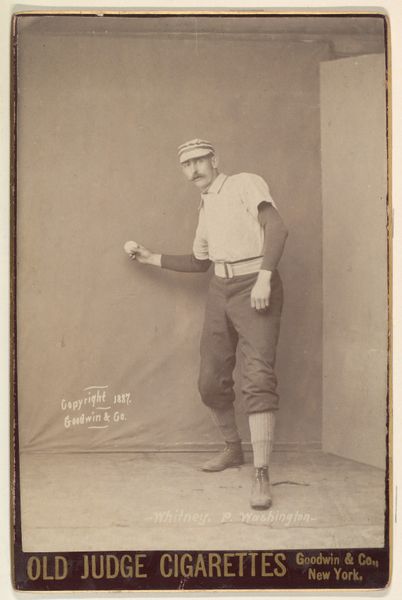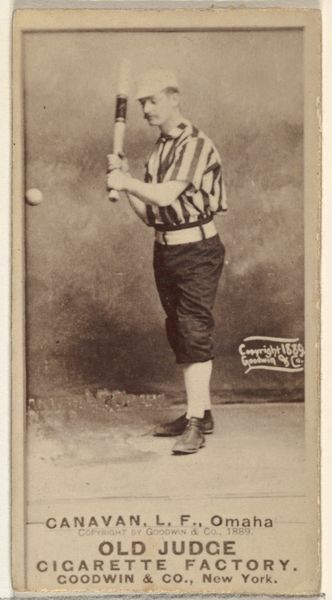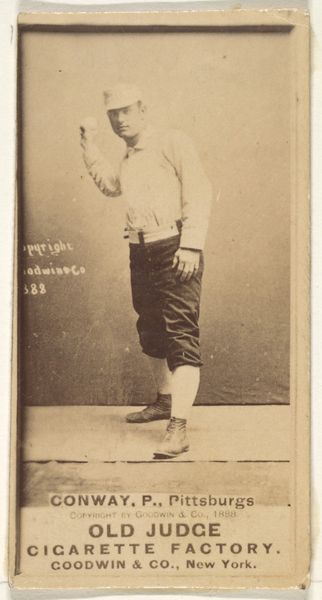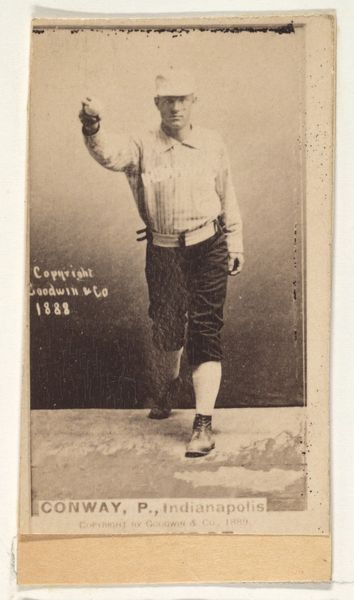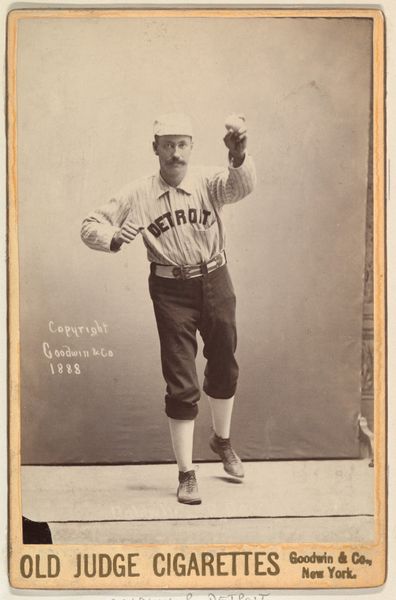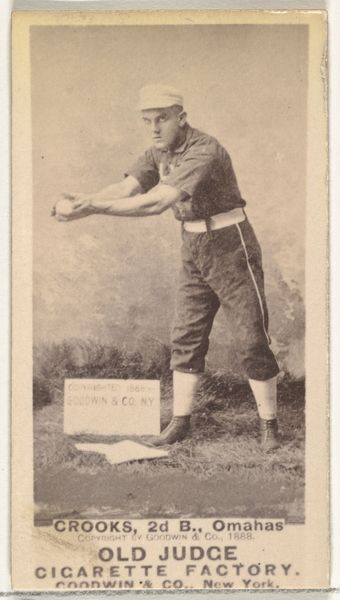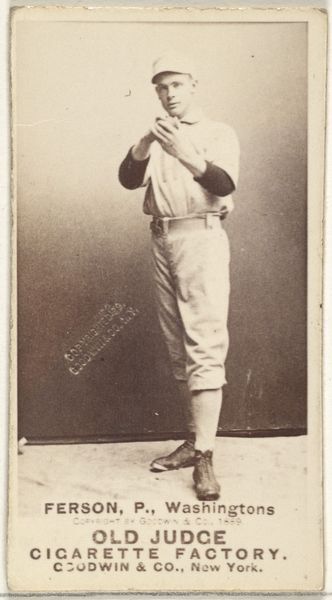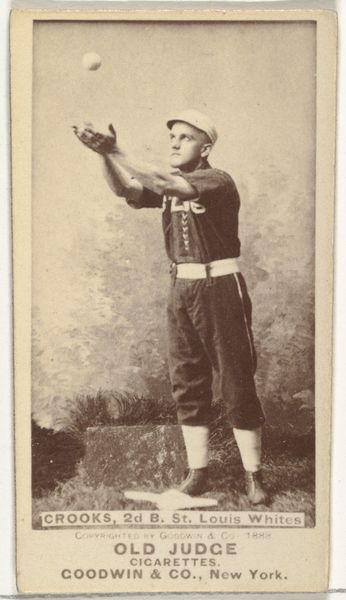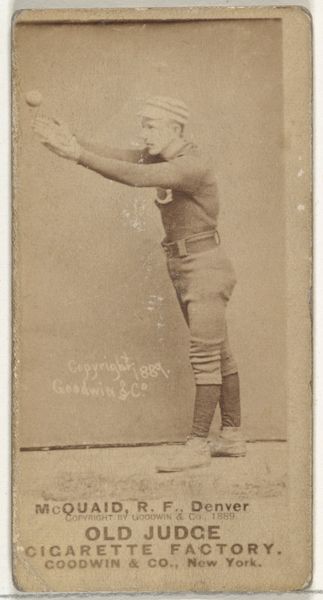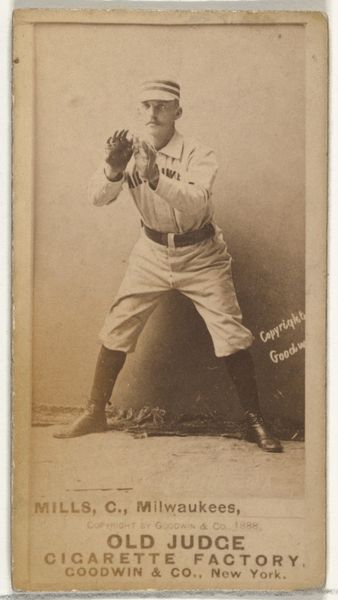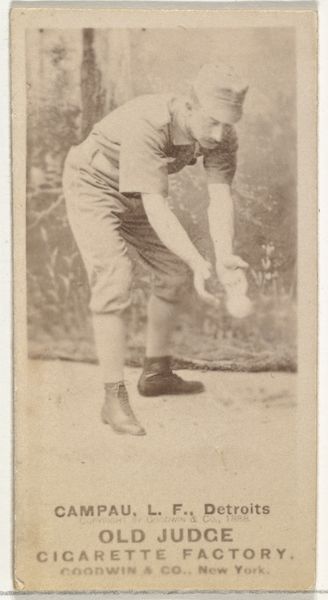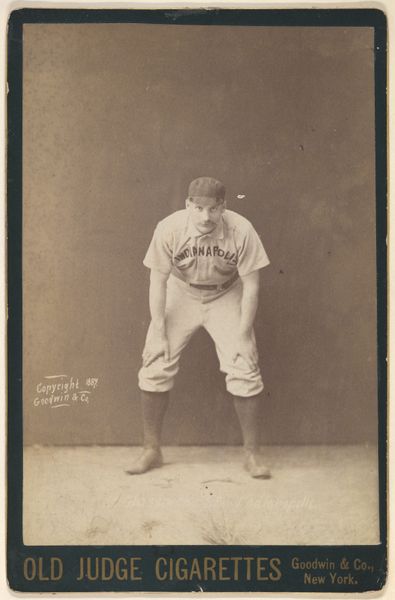
Scheibeck, Shortstop, Detroit, from the series Old Judge Cigarettes 1888
0:00
0:00
print, photography, gelatin-silver-print
#
portrait
#
still-life-photography
#
pictorialism
# print
#
baseball
#
photography
#
historical photography
#
gelatin-silver-print
#
men
#
athlete
Dimensions: sheet: 6 1/2 x 4 3/8 in. (16.5 x 11.1 cm)
Copyright: Public Domain
Curator: Looking at this gelatin-silver print, "Scheibeck, Shortstop, Detroit," created by Goodwin & Company in 1888, I’m struck by its simplicity and grace. It’s a testament to an earlier era of baseball and photography. Editor: My initial reaction is that it has this staged but also intimate feel. The tonal range in this photograph creates a dreamy almost romantic image that seems to romanticize baseball and masculinity. The limited color palette amplifies a kind of nostalgia, a longing for a bygone era. Curator: Exactly, and the photo's origin speaks volumes about the period. Produced as part of the "Old Judge Cigarettes" series, it highlights the interwoven relationship between commerce, leisure, and celebrity culture during the late 19th century. The placement of the name of the cigarettes just below his is a great touch of promotional advertising for its era. Editor: It’s interesting how consumer culture impacts art; how different are baseball cards nowadays than these promotional items. I wonder though, about the player himself—Scheibeck, a shortstop. What stories do his posture, his gaze, hold about masculinity in that specific historical and political context? Curator: Absolutely. Examining Scheibeck’s portrayal, we find clues to the era’s ideals, it normalizes things such as being photographed as a part of the team, the normalization of team merchandise like baseball cards etc.. While baseball's growth reflects industrialization, immigration, and leisure changes, analyzing imagery helps uncover nuances surrounding celebrity, class, and the developing ideas around athletes. Editor: Right, we should acknowledge the exclusionary dimensions embedded within baseball history, notably regarding race and socioeconomic background. Analyzing this work can provide insights into who was given the platform and the gaze, as well as those pushed to the margins. This image is not only about celebrating an athlete but needs interrogation on which bodies were considered worthy. Curator: I agree. It serves as a fascinating document to study evolving forms of popular representation. Images such as this, beyond aesthetic value, mirror complex political ideas and values that underpin the history of visual culture. Editor: I came into the discussion interested in what can the work express when decontextualized. Instead, I come out recognizing how powerful it can be to explore those relations further, and it becomes really a strong approach when looking at these baseball cards to contextualize and explore its themes further.
Comments
No comments
Be the first to comment and join the conversation on the ultimate creative platform.
